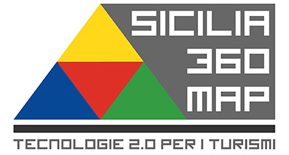To better understand how this information is typically presented, you may want to review a sample of financial statement. This can help you visualize how your chart of accounts translates into formal financial reporting. The first three are assets, liabilities, and equity, which flow into the balance sheet. The remaining two are income or revenue and expenses, which flow into the income statement.
For example, if you need to create a new account for ‘PayPal Fees’, instead of creating a new line in your chart of accounts, you can create a sub-account under ‘bank fees’. Similarly, if you pay rent for a building or piece of equipment, you might set up a ‘rent expense’ account with sub-accounts for ‘building rent’ and ‘equipment rent’. It includes a list of all the accounts used to capture the money spent in generating revenues for the business.
Every time you add or remove an account from your business, it’s important to record it in your books and your chart of accounts (COA) helps you do that. Assets are resources your business owns that can be converted into cash and therefore have a monetary value. Examples of assets include your accounts receivable, loan receivables and physical assets like vehicles, property, and equipment. A business transaction will fall into one of these categories, providing an easily understood breakdown of all financial transactions conducted during a specific accounting period. Expense and income/revenue accounts make up the income statement, which conveys the business’s overall profitability. These include liquid assets like cash, inventory, and equipment, plus prepaid expenses like paid-in-full leases or money that is under contract to come in.
Best chart of accounts software
FreshBooks accounting software is an affordable and reliable option for online bookkeeping services that will help you stay on track and grow your business. Similar to a chart of accounts, an accounting template can give you a clear picture of your business’s financial information at a glance. Utilizing accounting tools like these will ensure a better workflow, helping you grow your company. FreshBooks offers a wide variety of accounting tools, like accounting software, that make it easier to stay organized. The main components of the income statement accounts include the revenue accounts and expense accounts.
The four main account types in a chart of accounts list
Xero is an accounting solution for everyday businesses that allows users to work smarter with intuitive 12 ways to increase sales for your small business invoicing software. It enables you to send online invoices from the desktop or app as soon as the job is done. Most financial accounting software will automatically assign numbers for you, so you don’t need to worry about creating them yourself. You may have noticed that liability accounts usually have the word “payable” in their name. This is because liability accounts are where you record money that is under contract to leave the business but hasn’t yet changed hands.
What are the main differences between a chart of accounts and a balance sheet?
- As your business grows, so will your need for accurate, fast, and legible reporting.
- Revenue and expense accounts are listed next and make up the income statement, which provides insight into a business’s profitability over time.
- Because it’s the company’s obligation to make these payments, these accounts are “payable.”
- CoA replaces the filing cabinets of yore, where back offices had intricate paper indexing systems for their transactions.
- You also have a solid set of best practices for managing your chart of accounts.
A chart of accounts has accounts from the balance sheet and income statement and feeds into both of these accounts. Think about the chart of accounts as the foundation of a building, in the chart of accounts you decide how your transactions are categorized and reported in your financial statements. This intuitive software makes it easy to keep where does rent go on a balance sheet your company’s financial data organized and produce reports based on real-time information. The software tracks your finances with accounting reports and allows you to collaborate with your advisor online in real time.
Marshall is a former Securities & Exchange Commission-registered investment adviser and holds a Bachelor’s degree in finance from Appalachian State University. Asset accounts can be confusing because they not only track what you paid for each asset, but they also follow processes like depreciation. Find out more about how QuickBooks Online can help you save time and stay on top of your finances while you grow your business. Current liabilities are classified as any outstanding payments that are due within the year, while non-current or long-term liabilities are payments due more than a year from the date of the report. This would include your accounts payable, any taxes you owe the government, or loans you have to repay.
It has the authority to establish and interpret GAAP for all of these entities. This keeps you from creating too many specific accounts and spares you from a painful cleanup process at the end of the year. Your chart of accounts is an index, but it’s also meant to be a quick lookup table.




